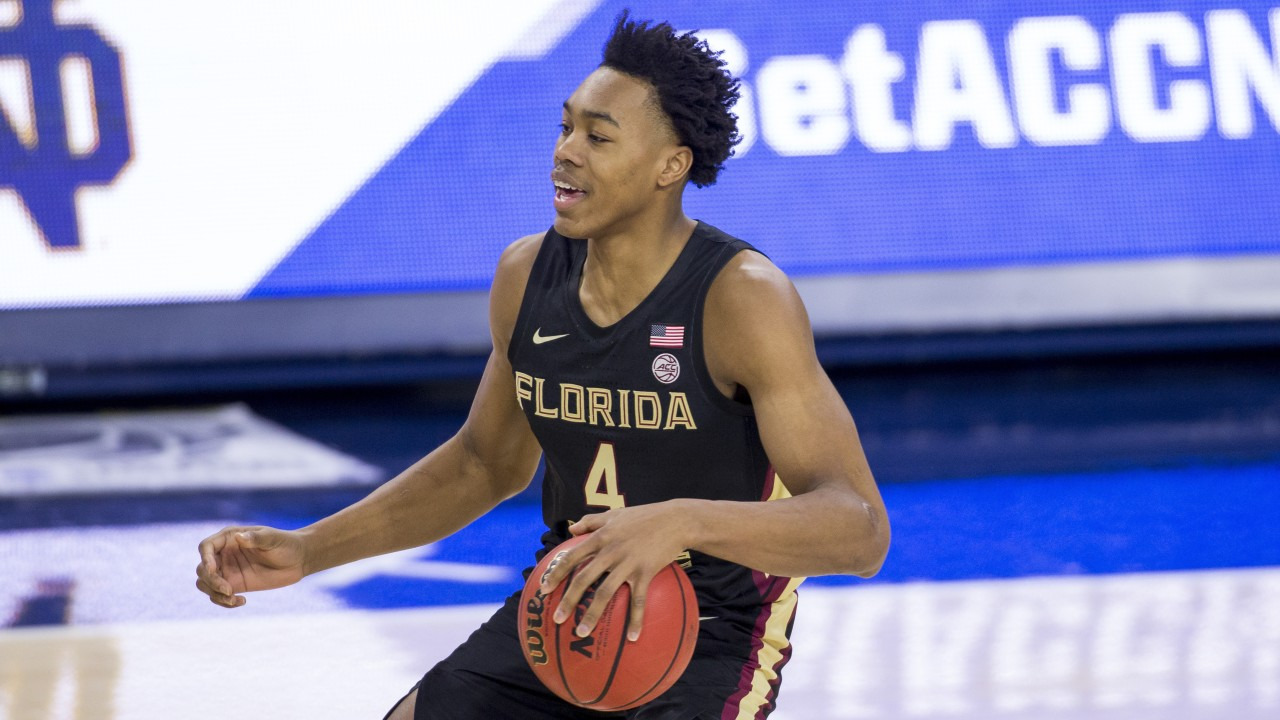2021 NBA Draft: Big School, Small Minutes

Evaluating prospects and projecting them for fantasy purposes can be a complicated process. There are hundreds of potential NBA newcomers every year and it’s impossible to become deeply familiar with every single one. There’s a temptation to just look at a player’s box scores and extrapolate out, give or take some wiggle room as the competition gets harder. That’s fine to establish a baseline for what a player is capable of contributing, but those numbers can be misleading, especially at larger schools. Roles and playing time aren’t necessarily a meritocracy in the NCAA ranks, as sometimes a player won’t fit a scheme or will need to spend more time on the bench to allow an upperclassman to play more. That’s especially true for power programs, where stacked rosters might prevent a young player’s true talent from shining on the court. With that in mind, let’s look at some prospects whose stat lines won’t jump off the page as a result of limited playing time.
Scottie Barnes, F, Florida State, Freshman
Stats: 24.8 mpg, 10.3 points, 4.0 rebounds, 4.1 assists, 1.5 steals, 0.5 blocks, 0.5 3-pointers on .503 / .275 / .621 shooting splits (FG / 3P / FT)
The poor shooting hasn’t dissuaded Barnes from likely going in the 4-10 range in Thursday’s draft, as teams adore the physical tools he brings to the table. Barnes is 6’9″ with a 7’3″ wingspan and plays with a high motor, which is exactly what you want on the defensive side in today’s NBA. He’s NBA-ready in that department and looks like a plus multi-positional defender already, with room to grow as well. Offensively Barnes was given some minutes as a lead guard for Florida State, and his vision is his best offensive attribute right now. The jumper obviously needs improvement but teams won’t hesitate to roll the dice on this kind of defensive upside. Fantasy managers will see those assists and defensive stats and get excited, though it’s unlikely that Barnes gets a ton of minutes as a facilitator at the next level. Length, versatility, energy and a high basketball IQ are going to give Barnes long-term potential as a strong source of steals and blocks, so hopefully, he becomes a scoring threat in time.
Jalen Johnson, F, Duke, Freshman
Stats: 21.4 mpg, 11.2 points, 6.1 rebounds, 2.2 assists, 1.2 steals, 1.2 blocks, 0.6 3-pointers on .523 / .444 / .632 shooting splits
Johnson is working with an exceptionally small sample, only appearing in 13 games before opting out of the season and signing with an agent. Those steals and blocks jump right off the page and speak to his potential versatility as a multi-position defender despite fleeting effort levels at Duke. Despite the strong 3-point percentage, Johnson’s jumper can be charitably described as ugly, and that conversion rate looks like a bit of a fluke considering that it came on low volume. His offense is limited overall, as teams can force him into tough spots because Johnson is often hesitant to take jumpers and can’t quite get to the rim on his own with regularity against set defenses. While he’s a solid passer, things can clog up on him because opponents dare him to shoot. There are intriguing physical tools, which resulted in those gaudy defensive numbers, but a draft selection will be a bet on Johnson pulling everything together and figuring it out. His game right now is less than the sum of its parts.
Kai Jones, C, Texas, Sophomore
Stats: 22.8 mpg, 8.8 points, 4.8 rebounds, 0.6 assists, 0.8 steals, 0.9 blocks, 0.5 3-pointers on .580 / .382 / .689 shooting splits
Jones, born in the Bahamas, spent a portion of his life training to be a long jumper, which might have something to do with his crazy athleticism. He’s ready for the NBA in that department and should have immediate gravity as a rim-runner and transition threat. He can comfortably switch on defense, which should help make up for the fact that he’s not an elite rim protector. Jones can also handle the ball a bit, and even if that doesn’t turn into assists, he can make teams pay for playing too aggressively. Teams get too aggressive because Jones actually has a workable, if inconsistent, 3-point shot. Jones’ weak spots, namely decision-making, strength and off-ball defense, look like issues that can be sorted out with time and attentive development — again, he isn’t a prospect that focused solely on hoops his whole life. If Jones can become a more consistent shooter and gets a handle on defensive rotations, he’s the sort of versatile two-way big that would unlock a lot of options for an NBA team.
Isaiah Jackson, F/C, Kentucky, Freshman
Stats: 20.8 mpg, 8.4 points, 6.6 rebounds, 0.7 assists, 0.8 steals, 2.6 blocks, 0.0 3-pointers on .540 / .000 / .700 shooting splits
Jackson surged as the season went on and finished by averaging 13 points over his last seven contests, which points to some upside that’s still unexplored. Kentucky prospects always seem to come into the draft with high profiles despite more modest stats, and that tracks here. Jackson’s ability to patrol the paint and swat shots coming from help positions is elite, and possibly the best in the class. He’s an explosive leaper who can get by on switches without getting torched. He’ll need to learn some more fundamentals, however, as Jackson is a certified block-chaser and will often abandon the right play in hopes of sending a shot back. That’s not going to fly in the NBA. Offensively, Jackson can’t do much beyond roll to the rim. He runs the floor well but isn’t much of a ball-handler and has no jumper to speak of. Once Jackson bulks up he’ll be a bit more versatile defensively but he should fit the typical defense-first, rim-running archetype as he enters the league.
Post a comment